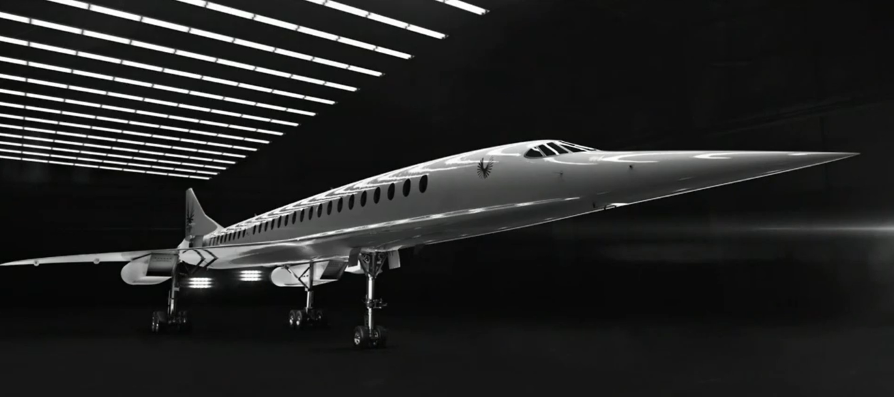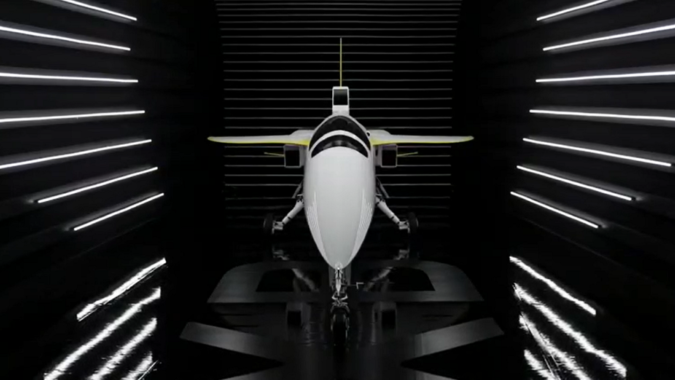Supersonic flights are a Holy Grail of commercial aviation, promising halvings of international flight times. While commercial supersonic flights have operated in the past, high costs for both airlines and passengers led to the last commercial supersonic flight taking place on a Concorde supersonic transport (SST) more than 17 years ago. Now, Boom Supersonic is aiming to revive the commercial SST – and they’re using Amazon Web Services (AWS) to do it.
Boom Supersonic, based in Denver, is currently working on the design of its new SST, Overture, which it expects to roll out in 2025 across more than 500 transoceanic routes. “At Boom, we are guided by one fundamental mission: to make the world dramatically more accessible,” said Blake Scholl, founder and CEO of Boom Supersonic, in an appearance during AWS CEO Andrew Jassy’s keynote at this year’s AWS re:Invent. “By the end of the decade, millions of everyday travelers will enjoy the benefits of supersonic flight aboard Overture, an airliner twice as fast as any flying today. That means that Tokyo will be just four and a half hours from Seattle, and London, just three and a half from New York speed unlocks new possibilities for human relationships and business connections.”

However, aircraft design is an exacting task, with each small tweak often translating to huge changes in the overall speed and fuel efficiency of a given aircraft. Even designing supersonic aircraft has often proved an exorbitantly expensive task.
To tackle the aircraft design problem, Boom is using HPC. But on-premises HPC resources are expensive, and even an on-premises system would likely have been overwhelmed by the many design iterations that Boom wants to test more or less simultaneously. So for HPC, Boom turned to the cloud: specifically, AWS.
In the cloud, Boom says that it’s able to run “thousands” of advanced simulations simultaneously, estimating a sixfold productivity increase compared to an on-prem system. So far, Boom has used more than 53 million compute hours on AWS – and they expect to use at least 100 million in total during the design of Overture.
Boom has already used its time on AWS to accelerate the design of XB-1 (aka “Baby Boom”), the demonstrator airplane for Overture, which Boom is calling the world’s first independently developed supersonic aircraft (and which was unveiled just two months ago).
“Since airplanes are amongst the most complex machines ever created by humanity, Boom will generate petabytes of data as we design and develop our Overture airliner,” Scholl said. “We are transferring 525 terabytes of XB-1 design and test data to AWS. Because AWS lets us put compute next to data, we can run models across our dataset, gaining actionable insights. For example, we’re using machine learning to calibrate simulations to wind tunnel results, accelerating model convergence, and allowing us to deliver a more optimized aircraft.”
Now, Boom is doubling down on that commitment, going “all-in” with AWS by using a wide range of AWS services ranging from IoT and machine learning to managed databases and analytics. Boom will also be using AWS storage for its 525TB collection of XB-1 design and testing data.
“Boom is taking a born-in-the-cloud approach to innovation and embracing the breadth, depth, and performance of AWS to reinvent commercial supersonic air travel,” said Teresa Carlson, vice president of Worldwide Public Sector and Regulated Industries at AWS. “We are thrilled to be collaborating with Boom to leverage the cloud to launch the next era of travel. By going all-in on AWS, Boom can innovate without bounds and more quickly than was previously possible, to make the world more accessible to everyone.”
Header image: the Boom XB-1.


























































